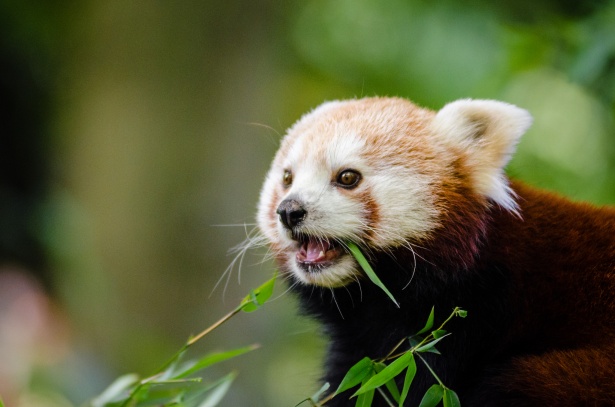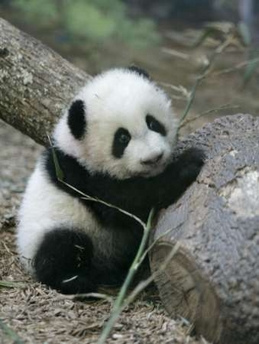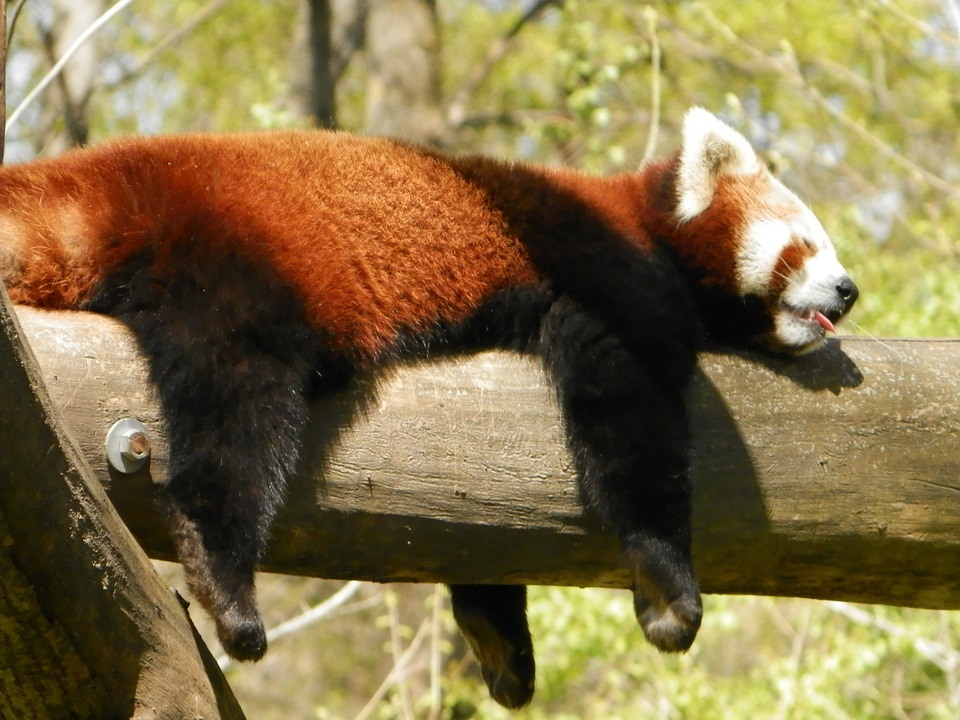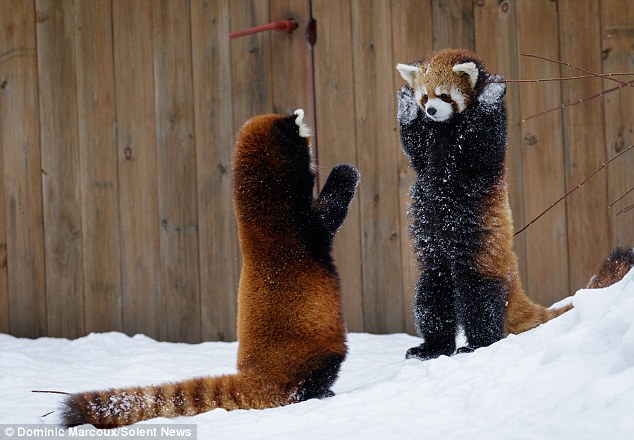At the beginning of this semester, my final semester at this school, I was assigned the task of writing two blog posts for BIOL 420. However, I did not look at this as an assignment; I saw this as an opportunity to leave a lasting legacy in animal behaviour. In the search for animal webcams I deliberated between many options, eventually I decided to observe the red panda.
Now, I should clarify a couple of points before beginning to discuss the behaviour I observed.
This is a panda.
This is the color red.
I think we call all agree on these two facts.
Now, here is another picture, but of a red panda.
1) It is not a panda (nor is it related to the giant panda)
2) It is debatably much more orange in color than it is red.
Something here does not add up.
+
1+2=3, not a red panda.
While the human behaviour that led to the naming of the red panda may be slightly questionable, let’s now talk about the behaviour I observed watching these very adorable creatures on webcam.
Upon connecting to the live stream, I was greeted by one red panda (RP) waking up in its nest, which proceeded to roll around on its back a few times. I imagine it had an itchy back, and this was its way of scratching it. Beyond this super cute moment, the behaviour for the remainder of my observation period was much more mundane. Upon leaving its nest, I noticed another red panda sleeping on top of a box. The red panda that was awake is who I will focus on in this blog post. Now that the RP is awake it went outside of its shelter and proceeded to a bamboo tree. For approximately the next minute it sniffed various parts of the bamboo tree. This was followed by consumption of bamboo leaves. After eating a few leaves the RP climbed to a higher portion of the tree where the bamboo leaves where more abundant. The RP grabbed branches and pulled them towards its mouth to reach the most dense leaf patches.
After six minutes of feeding the RP returned to his indoor habitat, climbed on top of a box and began chewing on some object. Five minutes later it returned outside, moved towards a vertical log and swiftly climbed up it. The rate which the RP ascended and descended the log demonstrated that red pandas have excellent climbing abilities. Following the climbing behaviour, the RP walked along the suspended log structure provided in its habitat and eventually returned to a bamboo tree. The RP remained at the bamboo tree feeding for approximately five minutes.
During the time in which the RP is feeding, the second red panda (RP2) woke up. RP2 proceeded to a water dish and drank the water. I believe thirst was the motivation behind this behaviour. After drinking, RP2 went outside and began feeding on bamboo leaves. At this point, both red pandas were eating, and I will return my attention to the first RP, whom spent close to ten minutes feeding. Immediately after the RP finished feeding, it proceeded to its indoor habitat at a very rapid pace, just shy of what I would classify as running. A few second later it went back outside. This is when the first, and really only, slightly entertaining behaviour occurred.
The RP briskly navigated around the ground level of its habitat in a figure-eight pattern. Concluding each figure-eight lap, the RP would jump up to the indoor habitat entrance, immediately turn around without entering, just back down, and repeat the process. This behaviour persisted for just shy of ten minutes before it returned to the indoor habitat to drink water.
Being in captivity obviously provided the red pandas with a smaller habitat then they would have in nature. I hypothesize this lack of space is the reason behind this highly active behaviour. In nature a red panda would be able to climb more trees and taller trees. The confines of captivity make it more difficult to be active, and this was the RP’s way of essentially exercising.
It is worthy to note that the red panda which I focused on was much smaller than its companion who was very inactive for the duration of my viewing. I suspect the smaller red panda was rather young. This would help to explain its higher activity levels and higher rate of feeding. However, this is a difficult conclusion to make from only 50 minutes of observation.
When I made the decision to observe red pandas I was hoping to witness very active and playful animals, and that it would look something like this. Two adorable creatures about to hug.
This was far from the case, what I saw was some running around by one red panda, a whole lot of relaxing from the other red panda, and various feeding rates between the two. In the world of social media we are constantly exposed to short videos of many cute animals, including red pandas, behaving and interacting in ways we find humorous. However, in reality, the majority of animal behaviour is often very mundane. In fact, red pandas are mostly solitary creatures, hence the lack of interaction between the two red pandas.
However, it is possible that being in captivity and only being in a population of two would affect the behaviour of the red pandas and reduce the frequency in which they interact. I observed the red panda’s for 50 minutes, which is not a large enough sample time to determine the behaviour trends the two red pandas have.
That being said, I have hypothesized on why the red pandas did not interact even though their captive habitat is rather small. There is only one other individual to interact with, therefore, regardless of their genders, competition by sexual selection is removed. If it is two males or two females, there is no viable matting partner to compete for. If there is one male and one female, there isn’t another red panda to choose as a mate, other than the only other red panda in captivity. Additionally, having all food provided and essentially zero competition for food, energy resources are not a concern; so the competition for resources and potential for aggressive interactions is removed, regardless of how inherently aggressive or anti-social the captive animals are.
While there are many ways in which I could explain the mundane behaviour of these red pandas, Occam’s razor says the simplest explanation is usually the best explanation. Therefore, the non-interacting, mundane, solitary behaviour I observed is best explained by the fact that red pandas are simply solitary, non-social animals.







Recent Comments